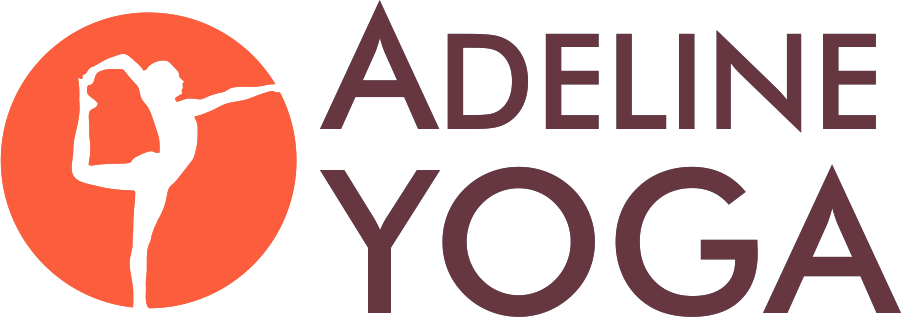 I’ll be teaching a workshop on Anxiety and yoga on February 28, so I’ve been exploring the nature of this malady. What are its roots? Why does one person take the things life throws their way in stride, while another becomes paralyzed with fear under the same circumstances?
I’ll be teaching a workshop on Anxiety and yoga on February 28, so I’ve been exploring the nature of this malady. What are its roots? Why does one person take the things life throws their way in stride, while another becomes paralyzed with fear under the same circumstances?
Anything you read on anxiety will tell you the same things. Fear and anxiety are not in themselves bad things. They played a role in our evolution and allowed for the continuation of our survival as a species. Anxiety is a natural response to fear of the unknown. The fight or flight response is hard wired into our brains. When things are working properly, that survival response kicks in, in the face of potential danger, and shuts off once the danger has passed. The problem exists when our baseline fear is so great, our fundamental perceptions so skewed, that we live in that state of anxiety. The brain can no longer distinguish a real threat, and treats everything as such.
To stop an anxiety attack, something has to intervene before the flight or fight response kicks in. That something comes from the mind, from one’s beliefs about the world one lives in. Here is where the practice of yoga, and a little understanding of yogic philosophy, becomes useful.
The yoga sutras name 5 obstacles to freedom – klesas – that exist in the mind. The first of these is avidya, or spiritual ignorance. Think of avidya as a fundamental misconception about our true nature. I liken avidya to looking into a one-way mirror. You see the reflection of yourself and the world around you, without recognizing the witness behind the glass. Who is watching from the other side of the mirror? That is your self, your soul, that intangible, ineffable presence that exists outside of time, space or death, which the yogi recognizes and seeks to illuminate. A lack of this understanding – Avidya – is the root of all the other obstacles, because it colors our perceptions of everything else.
So, how do anxiety and avidya relate? The roots of anxiety are based in fear. Fear is based on perception – and perception is based in experience (the past). Based on past experience we anticipate the future. Uncertainty about the future can create a desire to control that future, for fear of repeating negative experiences in the past.
Consider anxiety as a lack of trust, in oneself, others and the universe as a whole. This is generally caused by a breach in faith in life itself. It could be the result of a traumatic event at some point in one’s life, violence, a great loss, abandonment, or other such deep wound. Any kind of trauma can disrupt our belief in a greater whole, and cause us to feel isolated. If our fundamental belief is based in separation rather than connection, isolation rather than unity, then it makes sense that we would experience fear about our very existence. This kind of thinking embodies avidya.
However, if you parse away time, past and future, and come completely into the present, fear cannot exist there. The beauty of a yogic practice lies in its ability to bring you into the present.
How does the practice of yoga help with anxiety?
Breath awareness has been proven to help reduce anxiety. When an anxiety attack occurs, the breath becomes fast and shallow. Simply taking slow deep breaths begins to quiet the nervous system down. In the practice of yoga, a focus on awareness of the breath brings the practitioner into the present moment. It is also a point of connection. Everything that lives, breathes.
A regular asana practice acts preemptively to generate physical balance, strength awareness of the body, and confidence in oneself. Over time, the practice helps translate these qualities inward toward the emotional body.
In addition, there are poses and sequences that can reduce or eliminate an acute anxiety attack. For example, a challenging balance pose demands a focused mind, as does any short vinyasa sequence, where you are moving quickly from pose to pose. These are strategies to “distract” the mind long enough to bring it into the present where fear cannot exist. These can be followed by, standing poses that bring steadiness, back bends to bring optimism and vigor, inversions that give us new perspective, and finished with calming restorative poses to quiet the mind and nervous system. A regular, balanced, home practice can target your specific moods and needs, to reduce anxiety.
Most importantly, the breath is the experiential vehicle to understand and transcend avidya. We understand our connectedness with and through our breath. This breath, air, life force is shared by every other living thing, each time we inhale or exhale, demonstrating that we are not separate or isolated. It is actually impossible for us to be isolated whenever we connect with the breath. So stop, take a moment now, and breathe. Recognize the truth of the moment.
— Melinda Morey, Adeline Yoga Teacher

Alicia says
Hey Melinda, Nice post! I was reminded of it this morning when I read an article on the important of negative feelings (and how accepting them reduces anxiety): http://www.scientificamerican.com/article/negative-emotions-key-well-being/